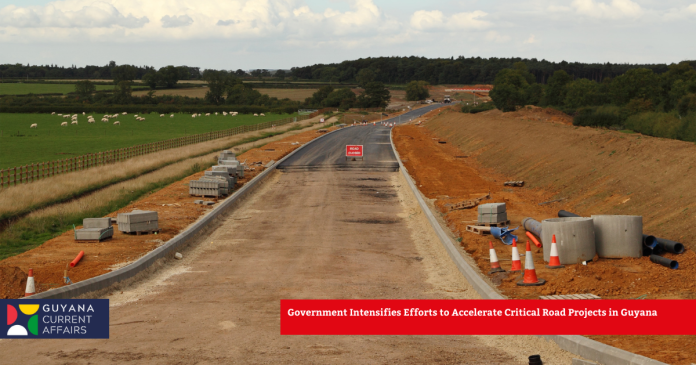The Guyanese government is ramping up its efforts to overcome obstacles and expedite key road projects across the nation, signaling a renewed focus on infrastructure development. This initiative is part of a comprehensive strategy to modernize Guyana’s transportation network and support the country’s rapid economic growth.
In a recent address, Minister of Public Works, Juan Edghill, highlighted the government’s commitment to addressing bottlenecks that have historically slowed down road construction and rehabilitation efforts. “We are taking a multi-pronged approach to ensure that our road projects move forward at an unprecedented pace,” Edghill stated. “This includes streamlining procurement processes, enhancing project management capabilities, and leveraging technology for better planning and execution.”
One of the major challenges being tackled is the shortage of skilled labor and construction materials. To address this, the government has launched a training program in collaboration with technical institutes to increase the pool of qualified workers. Additionally, measures are being implemented to facilitate the import of essential construction materials and equipment.
The accelerated road project initiative encompasses both urban and rural areas, with a particular emphasis on connecting remote communities to major economic centers. Key projects include:
- The East Bank-East Coast Road Linkage: This project aims to reduce traffic congestion in Georgetown and improve connectivity between two of Guyana’s most populous regions.
- The Linden-Lethem Road: An ambitious project to create a vital link between Guyana’s coast and its hinterland, opening up new economic opportunities.
- The New Demerara Harbour Bridge: A critical infrastructure upgrade to replace the aging floating bridge and accommodate increased traffic flow.
- Hinterland roads improvement: A series of projects focused on upgrading roads in Regions 1, 7, 8, and 9 to enhance access to remote communities.
The government is also implementing innovative financing models to fund these projects, including public-private partnerships and concessional loans from international development partners. This approach aims to accelerate project timelines while managing the fiscal impact on the national budget.
Environmental concerns are being addressed through the integration of sustainable design principles and the use of climate-resilient materials. The Ministry of Public Works is working closely with environmental agencies to ensure that road projects comply with ecological standards and contribute to Guyana’s low-carbon development strategy.
As these initiatives progress, the government anticipates significant positive impacts on economic growth, job creation, and improved quality of life for Guyanese citizens. The accelerated road projects are expected to play a crucial role in supporting Guyana’s emerging oil and gas sector while also diversifying the economy by enhancing access to agricultural and tourism areas.
With these concerted efforts, Guyana is positioning itself to overcome longstanding infrastructure challenges and build a road network that will serve as the backbone of its future development.


